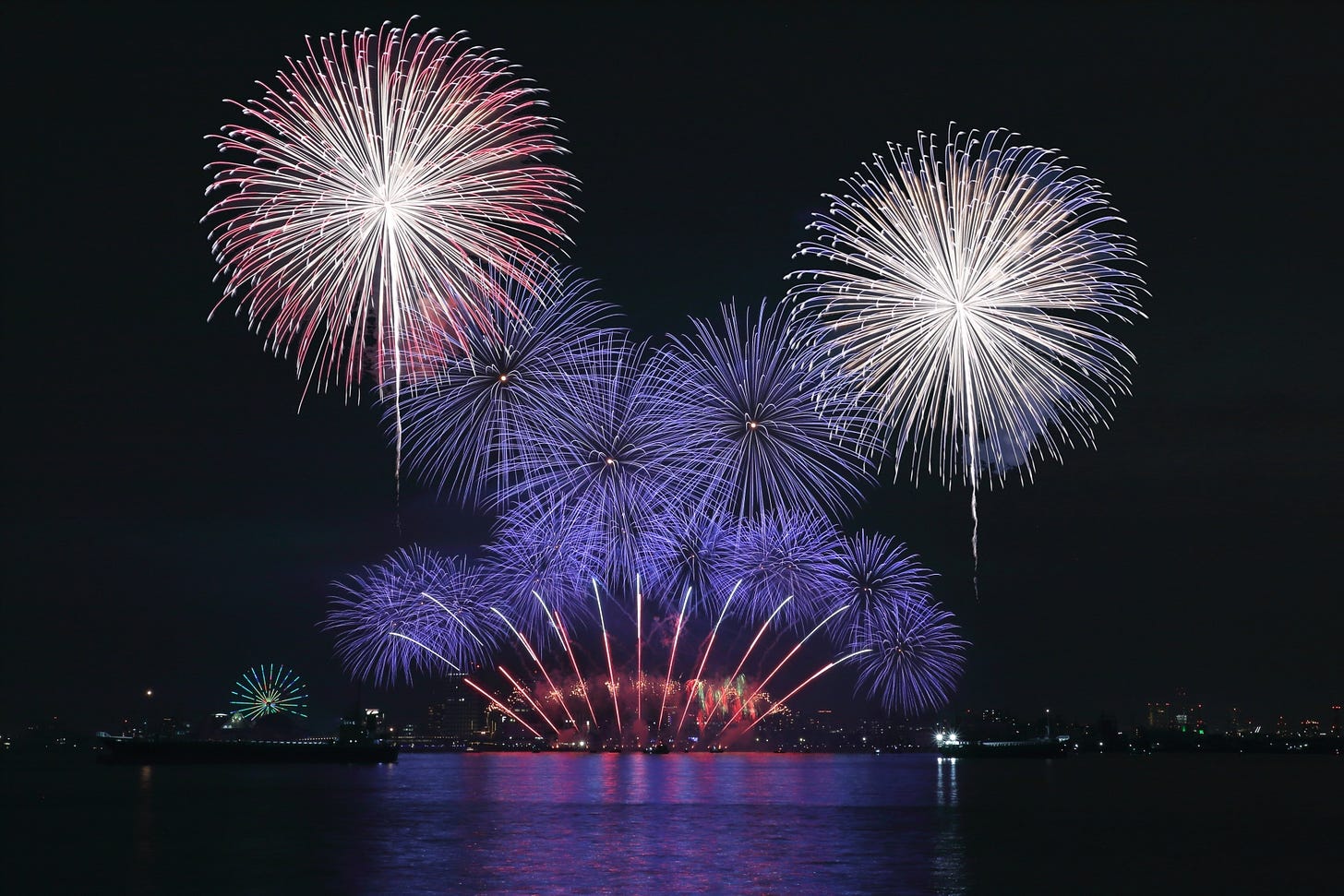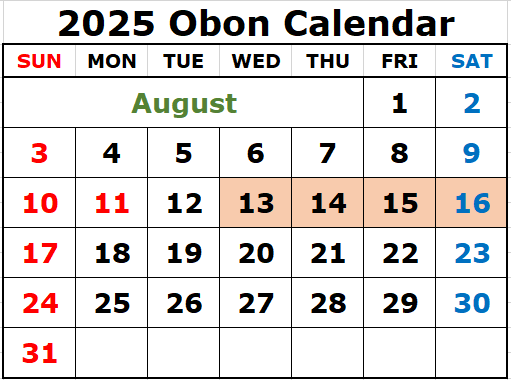#157 Japanese Summer Holiday Tips
Things to check when traveling during Japan's summer vacation season.
July has finally arrived, and Tokyo is already experiencing severe heat. The rainy season has already ended in the Tokai region, and the rest of Japan is just a breath away from the height of summer. On the 1st, the Yoshida Trail on Mount Fuji opened for the season, and on the 10th, the Shizuoka side will also open this week. With this heat, many people are likely to visit Japan through August. By being aware of the unique circumstances of the summer tourist season, you can avoid crowds and make your trip to Japan more comfortable. This week, I’d like to share some small tips for the summer holiday season.
Summer Vacation
Japanese elementary, junior high, and high schools operate on a three-term system, so summer vacation is the longest holiday period. For Japanese people, visiting relatives who live far away is a great opportunity, and there is a lot of movement of people, especially among families.
Although there are regional differences, the school vacation period is from late July to the end of August. During this period, major attractions across the country are so busy with families. Even on weekdays, be aware that places will be crowded with people.
With the World Expo being held in Osaka this summer, you should expect considerable congestion throughout the Kyoto and Osaka areas.
Obon
Obon is a traditional Japanese Buddhist event held in mid-August (or mid-July in some regions) to honor the spirits of deceased ancestors. Families return to their hometowns to clean graves, offer food, and light lanterns to guide spirits home. The festival includes Bon Odori (folk dances), fireworks, and ceremonies at temples. Obon is both spiritual and social, deeply rooted in Japanese culture, emphasizing respect for ancestors, family ties, and the cycle of life and death. It's one of Japan's most important holidays.
This year's Obon holiday will be from August 13 (Wednesday) to August 16 (Saturday). Since August 11 is a national holiday, taking August 12 (Tuesday) off will allow for a maximum of nine consecutive days off, including the weekend. Therefore, from August 9 (Sat) to 17 (Sun), there will be heavy congestion in various areas, particularly on domestic flights, Shinkansen trains centered around the Tokaido and Sanyo lines, and on specific days during the period, highways may experience traffic jams spanning tens of kilometers, making long-distance travel extremely difficult.
For overseas tourists, the impact is felt when taking a highway bus from Tokyo to the Fuji area. As mentioned in previous articles, taking the train for the return journey is more reliable. For this point, please refer to my earlier post “Train or Bus.”
Personally, when planning domestic trips, I always avoid this period.
On the other hand, due to the concentration of population in Tokyo, the Obon period sees a massive exodus toward hometowns. As a result, the number of people in Tokyo decreases significantly compared to usual, leaving downtown office districts particularly deserted.
Avoiding Heat
In addition to crowd control, another important consideration in recent years is heat countermeasures. Even in Tokyo in September, there can be days when the temperature exceeds 35 degrees Celsius, and high humidity also requires caution.
Even as a Japanese person, I hesitate to walk around in the scorching sun every day under these conditions. I recommend planning a schedule that avoids the effects of the heat and setting aside a day of rest to pace yourself.
You can find information on how to deal with heat from my previous post.
Situation in September
Resume of Schools: Most elementary schools and high schools start their new semester in September. As a result, various fees decrease and congestion eases once September begins.
Long Weekend: September has two national holidays, September 15 and 23, and one of these will likely fall on a Monday, creating a three-day weekend. In fact, in 2025, the September 15 holiday will fall on a Monday, creating a three-day weekend. September 23 is a Tuesday, making it a scattered holiday, so it is possible to make a long weekend this week.
Still in Summer: In the past, September was considered the tail end of summer, with the heat generally subsiding by the latter half of the month. However, there are now many days in September when temperatures exceed 30°C, and on bad days, temperatures can even reach over 35°C. Therefore, it is more appropriate to consider September as an extension of a real summer.
Discount Tickets: The Youth 18 Ticket, issued by JR, is a discounted ticket targeting the summer vacation period, but it remains valid until September 7 for three days. This ticket allows unlimited travel on all JR lines' local and rapid trains for 10,000 yen, making it ideal for those with a specific interest in rail travel, especially during the first week of September.
Ticket Reservation: JR reserved tickets go on sale at 10:00 a.m. one month before the event. If you cannot avoid traveling during this period, I strongly recommend purchasing reserved tickets online.

Finally
Considering the crowds at tourist spots and the heat, it seems better to choose October for a comfortable trip.
From mid to late October, the higher-altitude regions in eastern Japan begin to see the start of autumn foliage. If you want to enjoy a leisurely trip before the peak autumn foliage season, this period might be the best.
In any case, amid discussions about overtourism across Japan, it is essential to review your travel schedule carefully to ensure a comfortable trip.
This article was brief, but I hope it is helpful for you.







Very helpful. We often try to travel to places at what are sometimes called 'the shoulders' of the high season (the busiest time for holiday/vacation travel) seeking to avoid the biggest crowds but still find the widest range of open venues to visit and the biggest variety of supporting services.